

Szkolne Koło Krajoznawczo-Turystyczne
HAMAK
![]()
D.E.S.T.IN.A.T.I.O.N.
: EUROPE
”Developing Sustainable Tourism In A Travel Information Overseas
Network”

|
|
 |
|
|
|
|
|||
 |
|||
|
|
|||
|
|
Szkolne Koło Krajoznawczo-Turystyczne HAMAK
D.E.S.T.IN.A.T.I.O.N.
: EUROPE |
||
|
|
|||
 |
|||
|
|
|||
|
|
|||
|
|
|||
|
|
|||
|
Contents: Presentation of the project Partner schools involved in the project Sustainable Tourism Project meeting in Italy (December 2005) Project meeting in Poland (May 2006)
1. PRESENTATION OF THE PROJECT The project is aimed at promoting sustainable tourism among young people. Each school is invited to “adopt” a minor tourist resort and students will be asked to elaborate alternative proposals, to prepare itineraries and to produce materials in the various languages of the partner countries involved in the project. 2. PARTNER SCHOOLSINVOLVED IN THE PROJECT I.I.S.S.
“SANDRO PERTINI”
Our school is called “Sandro Pertini” (after the name of a former Italian Head of State) and is located in Camposampiero, a little town in the north-east of Italy, about 40 km. far from Venice and 18 from Padua. The school opened in the 70’s as a “branch” of another commercial school but in 1978 it became independent; it offered 2 courses: one for “Accountants” and another one for “Programmers”. In 1998 it updated its curricula and the former diploma as “accountant” turned into a modern qualification , which could meet the requirements of the world of work in the local territory. The latest additions to the school include a course for “Fashion Designers” (since 1999) and a course for “Mechanics” (since 2000), while in 2002 a new course for Tourism Management was introduced. It has 754 students and about 100 teachers and it is divided into three branches (or subordinate courses): business/administration classes, “fashion” classes (where students learn how to design and make clothes, but they are also taught basic notions about marketing, the use of CAD, etc.), vocational courses for future mechanics and, finally, an evening business/administration course for adults. The 1st year is compulsory and then students can decide either to leave school or go on studying. If they choose the business/administration section they can get their diploma only at the end of the 5th year, otherwise, if they attend vocational courses, they have to take an exam after 3 years; after that, if they want to go to university, they have to attend 2 years more and take the final exam in order to get a diploma. All the students have to study a set of “core subjects” like Italian, Maths, Foreign languages (English, French, German and Spanish) or P.E., but the others depend on the course and can vary from Information Technology to Economic Geography, History of Costume or Economics. Further activities are also provided such as: European projects (Comenius) and exchange projects Health education Psychological Advice and Information Centre University and Careers guidance “Remedial” activities for students Links and cooperation with local industries and businesses (training activities) School championships and school trips. Lessons start at 8.05 and finish at 13.35 from Monday to Saturday; there are usually 6 lessons a day with 2 breaks of 10 minutes each. The “fashion” classes have a different timetable: 5 days, from Monday to Friday, and afternoon lessons twice a week; on Saturday morning experts from local businesses or industries offer consultancy and students can learn a lot from their experience. We have one principal, Mr. Enrico La Gloria, supported by two deputies who help him, one for each section (technical and vocational).
Gimnazjum
Nr 2 z Oddziałami Integracyjnymi Jasło, numbering about 40 thousand people, is a town situated in Podkarpacie Province, in the south-east of Poland, 70 kilometers from Rzeszow and 150 kilometers from Cracow. The present area of Jasło forms an unshapely triangle of 3,365 hectares. Gimnazjum Nr 2 z Oddziałami Integracyjnymi im. Ignacego Łukasiewicza w Jaśle was founded by Jasło City Council on 11th March 1999 due to a new educational reform and started its work on 1st September 1999. The school was located in the buildings of Primary School No 9. The headmistress of the school is Mrs Aleksandra Zajdel-Kijowska (MA) and her assistant principals are: Mrs Renata Goleń (MA), Mrs Ewa Kosiek (MA) and Mr Lucjan Tomalski (MSc). Students, aged 14 to 16, attend school for 3 years. There are 15 compulsory subjects in the school curriculum: Polish, History, Biology, Geography, Physics, Mathematics, Chemistry, Computer Studies, Social Studies, Technology, Art, Music, Physical Education and 2 foreign languages: English and German. Religion Education is an optional subject. Lessons take place from Monday to Friday, for 5 days a week. They are held from 8 am until 2 pm. On average students have 6 lessons a day. Each lesson lasts for 45 minutes and breaks are 5 minutes long, except for a 10-minute brunch break and 15-minute lunch one.
The characteristic feature of the school is the existence of integrated classes. In fact it’s the only school of this kind in our administrative district in which disabled students can learn together with their healthy colleagues in friendly, caring and tolerant atmosphere. The disabled teenagers are looked after by assistant teachers and their work is based on special schemes, prepared individually in accordance with their deficiency. Nowadays, there are 6 integrated classes and 28 typical ones. On 1st September 2005 two new kinds of classes came into being in our school. One of them is the linguistic class with the increased number of English lessons (5 lessons a week – 2 lessons more in comparison with other classes) and the other – with Mathematics as the leading subject. These new forms enable students with special abilities to develop linguistic or mathematical interests and skills. There are from 20 to 30 students in every class. Nowadays 850 teenagers attend our school (399 girls and 451 boys). Some of them live in the city of Jasło while others come from the suburbs and nearby villages. The school provides free transport for the students who commute every day. Our pupils come from various families and backgrounds. The basic differences regard parents’ education, jobs, employment and financial situation. The main mission of the school is educating the alumni who can be not only the citizens of Poland and the world but also celebrities of our Little Homeland. In our institution young people are provided with suitable opportunities to educate and be brought up in the atmosphere of tolerance, respect for humanistic and moral values. The school attaches great importance to students’ interests in other countries, foreign cultures, customs and traditions. Besides, it motivates them to involvement with different fields of education. The school offers lots of extra-curriculum activities and the pupils can also belong to numerous clubs or organizations so they have good conditions to extend their knowledge, improve skills or develop abilities. Popular clubs and organizations are: European Club ”Eurogim”, School Theatre, School Radio, Volunteer’s Club, School Choir, Poetry Club, Journalist’ Club, Art Club, Tourist Club ”Hamak”, Film Club, The Regional History Club, Models Clubs ”Falcon”, Olympian Club, Scouting Association ”Foxes” and different sports sections. Apart from these clubs and organizations there are also some extra classes strictly connected with obligatory school subjects which aim at increasing students’ knowledge of the subject. Our teachers and pupils organize lots of periodical educational events at school and in the region. They both promote the school itself and create an environment favourable to students’ interests.
At present our Gimnazjum is the institution with some tradition and status. It has been given the title of ”The first-rate school” – signed and supported by Polish President Aleksander Kwaśniewski, The Certificate Of Citizen Education Centre and 2 grants - from L. Kronenberg’s Bank Fundation and Children’ s and Youth’s Polish Fundation. Besides the school cooperates with Eotvos Josef Gimnazium Szeged in Hungary. The main aim and intention of this cooperation is not only the development of different educational aspects but also the youth integration through mutual getting information of cultural heritage and organizing common rest during winter or summer holidays. The students of our school have always taken part in different kinds of competitions and they have been successful in motley spheres and fields. The important achievements include great successes in: European School Contest ”Europe at school”, ”My Homeland as a democratic country” ( finalist titles at provincial and all-Polish levels), a seat in IX Children’s and Youth’s Parliament. Besides, the members of School Tourists Club ”Hamak” were awarded first prize in all-Polish Contest for ”The Best Tourists Club in 2004”. Nowadays 95 teachers of different specialities work in Gimnazjum No 2. Most of them are prepared for working with disabled students. Many have qualifications to teach 2 school subjects. The teachers tend to receive new qualifications or experience and improving their skills at extra courses, conferences and post-graduate schools. Gimnazjum Nr 2 z Oddziałami Integracyjnymi im. Ignacego Łukasiewicza w Jaśle is located in the biggest and the most modern building of all schools in our town. Moreover, it’s fully adjusted to the needs of disabled students. There is a special drive, a toilet and a cloakroom for teenagers in wheelchairs The school building consists of 21 classrooms, 12 laboratories, 3 computer rooms which are equipped with wired internet access and school www net. Our school boasts a variety of facilities. Apart from classrooms for general, everyday use there is also a big library, a reading-room, 2 gym halls, 4 sports fields, a weights room, a tennis court, a youth club, a rehabilitation room. The school offers specialist help as well so there are offices for: a psychologist, an educator, a re-educator, a therapist, a rehabilitation teacher, a dentist, a school nurse. The students can also have dinners at the school canteen. Zdruežná
stredná škola dopravy, obchodu a služieb Slovakia is a beautiful small country in the heart of Europe. Its total area is 49 035 sq km and it has 5.38 million inhabitants. The majority of the population is of Slovak origin, but there live also Hungarians, Romans, Ukrainians, Czechs, Poles, Jewish and others minorities in the country. The official language is Slovak but there are various dialects in some regions. The capital of Slovakia – Bratislava, is the biggest town of the country (450 000 inhabitants). Nitra (87 000 inhabitants) lies in the south-western part of the country 80 km far from Bratislava.
The school year begins on September 1st and finishes on June 30th in Slovakia. There are autumn, winter, spring and Easter holidays during the school year. Children start to go to school at the age of six in Slovakia. They begin their 10-year compulsory school attendance at elementary school. The elementary school lasts for nine years but some clever students may leave it after the 4th class and go on their study at 8-year secondary grammar schools (after passing entrance exams). The majority of the pupils leave the elementary school after the 9th class. Then they have to decide whether to go on their study at a secondary grammar school (after passing entrance exams) that prepares students for study at universities, or at a comprehensive school (it gives a professional education but prepares for the study at universities too), at a school for apprentices (the study takes for 3 or 4 years) or at an art school. At this time there are state, private and religious schools in Slovakia. The average length of the study at the secondary school is four years. At the end of the 4th year students have to pass a school-leaving exam, consisting of oral, written and practical parts. If a student doesn’t manage to pass the examination on the first attempt, he is offered a second chance in September and the third one in February next year. The United Secondary School of Transport, Commerce and Services in Nitra was established on 1st October 2001 as a result of uniting the Secondary School for Apprentices and the Girl’s Professional School. It is a state school, supported by the local board.
The building of the school is really historical - it is 122 years old. Its history began in 1883 when the original School for Apprentices was founded. It prepared 230 apprentices in various branches for the enterprises in the town. The School for Apprentices was one of the greatest schools in the West Slovakia region. First two classes of Girl’s Professional School were opened in 1991. There were two independent schools in one building for ten years. But they had the same headmaster and three principals. The school obtained a good reputation during its history. The sign of it is an increasing interest in the study at this school and satisfied employees of our former students. Nowadays the great problem of the school is the number of students, classes and classrooms. There were 1024 students in 41 classes last school year at our school (the number of teachers is 55). But there are only 23 classrooms in the building (including two computer rooms, two rooms for teaching typing and one language-room). In fact three classrooms of 23 are situated in a separate building in the middle of a small schoolyard. Some students of educational branches have to “move” away from the main building to another one in the town to have their lessons there. Most lessons begin at 8 a. m., but very often at 7.10 a. m. too and even at 12.30 p. m. (superstructure courses - on Monday, Tuesday and Wednesday). Students have 32 or 33 lessons from Monday to Friday; it means 6 or 7 daily. Lessons last for 45 minutes and breaks during lessons are 5 or 10 minutes long and there is one break of 20 minutes for lunch. But we have no opportunity to have dinner at school canteen because there is any. School has only one small playground and one small gymnasium in the basement. “Združená stredná škola” educates students in various branches, such as: Branches specialized to cosmetics, business and enterprising in trade and tourism (the study lasts for 4 years and ends with school leaving examinations), 3-year educational branches (car mechanic, electrician, hairdresser, photographer, plumber, varnisher, shop assistant), 2-year superstructure courses (city transport, commerce, hair cosmetics, manufacture and services). Our students have taken part in various extracurricular activities and competitions of local and national levels. For example Car mechanic JUNIOR, Competition in Literature and Art painting, Professional Activity of students from various secondary schools, Ampho and Diaphoto, International competition in mathematics, competitions in English and German languages, athletics, football, volleyball, typing, competition “Show what you are able to do”, “Bata Junior”, “Enterprise of the Youth”… Students used to be very successful especially in sport, typing and language competitions. It is very complicated to organize some after-school activities because of the timetable. The favourite after-school activity is Internet, conversation in foreign languages and Riflemen Club. When students ask for extra lessons teachers are always willing to give assistance. INSTITUTO DE ENSEÑANZA SECUNDARIA “MAYORAZGO”
Malaga´s climate is Mediterranean, with mild winters and warm summers. Both the surrounding mountains and the sea breeze contribute to its nice climate. Mayorazgo high school is located in Malaga. The teaching staff is composed of 37 teachers. The number of students nowadays is 370 ranging from 12 to 20 years old. Several types of education are offered: compulsory secondary education (from 12 to 16), seventh form (called Bachilleratos in Spain) with branches in Social Sciences, Arts and Health Sciences and vocational training with specializations in Nursery Education, Secretarial Courses and Administrative Assistantship Courses. We are provided with a Student Guidance Team and teaching staff qualified to assist students with special needs. Lessons are given from Monday to Friday, from 8.30 am to 14.30 pm. Everyday there are six lessons with a break of 30 minutes at midday. In total, students receive 30 lessons of about an hour. English and French are both subjects present in the curriculum. In the evenings, our high school offers a wide range of extra activities in which not only students but families and other people involved can participate: Computer Sciences, Italian, Dancing, Capoeira, Taichi, Gymnastics, Drawing and Painting, etc.
The high school has a gym, library, computer lab, Physics and Chemistry labs and special classrooms to carry out Nursery Education and Administrative Assistantship workshops. Although our high school is situated in an area with a middle-high socio-economical level, our students have different backgrounds. Many of our students come from other districts in Malaga, as well as from the province. Besides, some of our students are not Spanish, but Irish, English, Italian, French, Polish, Ukrainian, Czech, Cuban, Ecuadorean, Argentinian, Moroccan, and Chinese. We have some experience in European projects as we have participated in a school project with France and Italy and in a linguistic project with Italy. Furthermore, some of our students of vocational training have had practices periods in EU countries such as United Kingdom and Italy. Nowadays, we are developing the project: “School of Peace”, which aims to promote values like solidarity, respect, tolerance, gender equality and environmental respect, among others. 3. SUSTAINABLE TOURISM What is Sustainable Tourism? What are its main features? What kind of prospective development could it have? The answers to these questions are to be found in the following synthesis of a Study by the European Commission. European Commission Study USING NATURAL AND CULTURAL HERITAGE TO DEVELOP SUSTAINABLE TOURISM IN NON-TRADITIONAL TOURIST DESTINATIONS
Presented by KERSTIN SUNDSETH ECOSYSTEMS LTD
CHANGING MARKET PREFERENCES
Growth rate of ‘alternative’ tourism at 8%
Possible reasons for market shifts: more experienced travellers seeking new destinations greater mobility within EU (transport, internal market & €) tendency towards shorter more frequent trips older but more active population greater concern for quality and environment
Lack of information Few co-ordinated large-scale market surveys Confusion in terminology: green tourism, ecotourism, rural tourism Heterogeneous market: large diversity of activities attracting different people for different reasons
TYPES OF ACTIVITIES
Nature tourism: walking, cycling sightseeing wildlife viewing canoeing, riding hunting, fishing nature conservation
Adventure tourism: dog sledging white water rafting orienteering incentive tours
Education tourism: music, art courses field course ecology local cuisine, painting local history, culture
Cultural tourism: festivals, events village life sightseeing vernacular architecture traditional festivals and activities
ACCOMODATION AND FOOD
Expectations of German eco-tourists (from World Tourism Organization survey)
50% expect small accommodation run by locals 41% expect local cuisine with local ingredients 41% expect strong local hospitality
TYPICAL VISITOR PROFILE
39-59 age group, more educated, greater travel experience, sensitive to environment & social concerns take holidays outside peak seasons - 7 days or less book and travel independently no clear preference of destination - often regional distinction: committed, interested or casual tourists
EUROPE’S NATURAL AND CULTURAL WEALTH
Heritage: sense of belonging sense of time
Natural heritage: wildlife & habitats protected areas landscapes geological features
Cultural heritage Tangible Intangible
PROSPECTS AND LIMITS OF TOURISM
Benefits new employment opportunities diversifies local economy conserves local heritage
Constraints: lack of interest lack of manpower, skills and qualification lack of organised structure lack of support from other sectors dependent on outside factors potential social conflicts possible damage to local heritage
4.PROJECT MEETING IN ITALY - December 2005
On the first day, project activities were aimed at getting to know one another; each student was asked to introduce himself/herself to a small group of foreign partners; then he/she was introduced to the others in all the languages of the schools involved in the project.
A melting pot of colours, odours and flavours: meeting by trying food. The students and teachers of the four schools involved in the Project had been invited to bring typical food and drinks from their own countries, so they presented them during a “multicultural buffet” and everybody could try them.
CAMPOSAMPIERO The area of Camposampiero is located about 20 km north of Padua. Today this area includes 29 villages. The name Camposampiero probably comes from an area of marshland which had been turned into farmland (campus) ; nearby there was a little chapel dedicated to St. Peter. The name of the village originated from the union of the two words: “CAMPUS” and “SANCTI PETRI”. The area has been inhabited for a long time and it certainly was in Roman times, since it was crossed by Via Aurelia, which linked up Padua, Asolo and Belluno, and it was near the Roman “Graticolato”. With the decline of the Roman Empire, the area was subject to the Barbaric invasions from the north-east of Europe. In the Middle Ages, the feud belonged to the Camposampiero family. The founder of that family was probably Tiso, an army leader who arrived in Italy in the XI century. After the building of the castle, in 1085, the small village became a small town. At present, the castle hosts the town hall. Later on for Camposampiero and the nearby villages, the domination of the Carraresi began, which lasted up to 1405, when Venice ruled over the whole region.
The power of the “Serenissima” declined definitively in 1797, when Napoleon invaded the territory and tried to eliminate the signs of the previous domination. After the Restoration, from 1814, the Hapsburgs’ rule guaranteed a period of peace and tranquillity up to 1860. In 1866 the area of Camposampiero , as well as Veneto, became part of the Kingdom of Italy.
Meeting the Mayor of Camposampiero, Mr. Marcello Volpato. Strolling through time…in the province of Padua Since “Sustainable Tourism” is the theme of the Project, the Italian group decided to propose an “alternative” historical – geographical itinerary, aimed at discovering treasures which are to be found in the province of Padua, but which are less renowned among tourists.
…….the Venetians (VIII-II century B.C.)… Many archaeological finds of the Iron Age are collected in the Museum of the River Bacchiglione, located in the castle of S. Martino della Vaneza. The exhibition displays objects of the Venetian culture, in particular: bowls, daggers with sheaths, buckles, phorphyry funerary pebbles with Venetian inscriptions and a little bronze statue, representing a warrior on horseback.
the Romans… The Roman Centuriation museum displays the finds that come from the north-east of Padua, which shows evident marks of an agrarian division dating back to Roman times. The area layout , called centuriation, consisting of square-shaped parts of the same size, represented a practical system of reward to soldiers for their service. Borgoricco town hall hosts an exhibition which is displayed in two rooms, where objects are provided with explanatory posters.
The area of Padua is rich in monuments, but near the city the Romans also created the “graticolato”. This structure corresponded to the division of the land into square-shaped parts. The “graticolato” developed between the river Brenta and the Muson. The landscape has not changed much since Roman times. In that period, “agrimensores” had the task to measure and divide the land by means of a device called “groma”, which allowed them to draw a sort of grid. The extent of this pattern from the north to the south was called “Cardo”, while the “Decumano” stretched from the east to the west. The findings collected in the museum prove the existence of rural settlements. Among other things, visitors can see amphoras, coins, a Roman balance and iron farming tools. Weaving was one of the main activities performed by women. There were different types of Roman pottery (grey, black, etc.), as well as bronze and glass vases.
……the Middle Ages… S. Martino della Vaneza is a medieval castle which was donated by the city of Padua to the Carrara family; inside the building there is the museum of the River Bacchiglione. The most ancient part of the monumental complex is the tower, which was built in 1000 on the southern bank of the Bacchiglione. The tower was later reinforced by the Carrara family and the trachyte wall was rebuilt on the southern side. During the Venetian domination the castle was turned into a river port.
……St. Anthony in Camposampiero… THE WALNUT TREE CHAPEL This Chapel is undoubtedly the most interesting monument in Camposampiero and testifies St. Anthony’s stay in this town. The Oratory of the walnut tree is what remains of an ancient building, dating back to 1200, which included the church of Saint John the Baptist and the Franciscan Friars’ monastery. At the end of the XIX century, everything was destroyed and only the Oratory of the walnut tree was saved. Why was the Chapel built? The cycle of Camposampiero frescoes is certainly a precious ex-voto, commissioned by an “anonymous knight”, who had miraculously survived after a horse accident (which is to be found in the semi-lunette above the door). As far as the client is concerned, there are two indications in the Chapel: the first one is in the outer lunette above the door, representing St. Jerome next to the Virgin Mary and St. Anthony; the client’s name could be Girolamo. The second indication is to be found in the altarpiece by Bonifacio de Pitati, where, in the foreground, there is a man sitting on a precious oriental carpet and another one standing, wearing plain clothes and turning towards St. Anthony who is preaching from the top of a walnut tree. The standing man could be the client who commissioned the frescos (Girolamo II, who lived in 1550).
……the Renaissance…  In
the province of Padua there is a magnificent Palladian villa, Villa Cornaro; as
regards architecture, this is one of the most influential monuments in the
world. It was commissioned by Giorgio Cornaro and in 1552 it was designed by
Andrea Palladio, who is still considered one of the most important architects of
all times. The building has got two façades: the northern one gives the idea of
“villa-palace”, while the other one is more harmonious. This Villa embodies both
the residential and recreational functions. In
the province of Padua there is a magnificent Palladian villa, Villa Cornaro; as
regards architecture, this is one of the most influential monuments in the
world. It was commissioned by Giorgio Cornaro and in 1552 it was designed by
Andrea Palladio, who is still considered one of the most important architects of
all times. The building has got two façades: the northern one gives the idea of
“villa-palace”, while the other one is more harmonious. This Villa embodies both
the residential and recreational functions.
The interior is very interesting; beyond the north door there is a small gate which leads to a big hall with four columns and six statues, representing a few members of the Cornaro family. Initially the walls were bare but, later on, they were decorated with frescoes by Mattia Bortolami, illustrating scenes of the Old and the New Testament. So far, the owners of Villa Cornaro have changed six times and now it is the residence of Carl and Sally Gable from Atlanta (USA).
YOU CANNOT MISS THESE PLACES! ! ! PADUA The Venetians, the Byzantines and the Longobards marked the history of the city, but the 13th century was really important, as in that period the famous university was created and it was also the time when Saint Anthony lived . In the next century the Da Carrara family started dominating and artists like Giotto and Giusto de’ Menabuoi arrived in Padua. For the next four centuries the city belonged to the Republic of Venice and then it was ruled by the Austrians for fifty years. Finally, in 1866 Padua was annexed to Italy. Today Padua has a relevant role in the services sector, but it is also proud of its past and its splendid monuments, which can still be admired by the tourists who come to visit it. PADUA SQUARES
Inside the hall there are a wooden horse like Donatello’s Gattamelata and the Stone of Shame, where Paduans were held up to ridicule before being exiled for debts. In 1420 a fire destroyed the frescoes which covered the walls but, when the building was restored, Giovanni Miretto and Stefano da Ferrara decorated it with new ones representing “Allegories and Saints” and “Astrological subjects” . THE SCROVEGNI CHAPEL This chapel is also know as the “Arena chapel”, because it was built on the site of a Roman amphitheatre. The chapel was commissioned by Enrico Scrovegni. The façade is simple and the interior consists of one aisle. On the high altar there are some sculptures by Pisano, while behind it there is Enrico Scrovegni’s tomb. People visit the chapel to see Giotto’s frescoes, which were painted in the early 14th century and represent an innovation in the history of art because of the introduction of perspective. The frescoes, narrating the lives of Mary and Jesus, are composed of 38 scenes, divided into 3 parallel sequences on the side walls. This chapel has recently been restored.
THE CHURCH OF THE EREMITANI
The church of the Eremitani, near the Scrovegni Chapel, was built in 1276 and then, in the following centuries, the side chapels were added. In the 14th century it became one of the most important churches in Padua and was decorated by the greatest masters in town. On the southern side of the church there is a beautiful doorway, dating back to the 15th century and designed by Niccolò Baroncelli. The old Monastery of the Eremitani hosts the Town Museum and an important art gallery where visitors can admire paintings by Giotto, Giorgione and Paolo Veronese. The church has a wonderful wooden ceiling and contains also some works by Andrea Mantegna. Mantegna’s frescoes in the Cappella Ovetari were badly damaged during the Second World War and what remained has been restored, so as to allow visitors to admire the artist’s magnificent work. THE BASILICA OF ST.ANTHONY
The largest church in Padua is the Basilica of St. Anthony. Every year hundreds of thousands of pilgrims and tourists come to visit this place. The building presents Roman, Gothic and Byzantine influences and was built on the place where, previously, there was a small church called Santa Maria Mater Domini. After St. Anthony’s death, people wanted to build a larger church which would host the Saint’s tomb. The building of the Basilica started in 1232. Its impressive interior hosts works by many famous artists such as Donatello. There is also the Chapel of the Relics, where St Anthony ‘s chin and tongue are kept. THE PALACE OF THE “BO” The “Bo” was an old inn and its sign was the skull of an ox. Since the 16th century, the building has hosted the university (the second oldest in Italy, founded in 1222). The best preserved area is the interior courtyard, with its porticoes decorated with the coats of arms of the noble families the students belonged to. Inside the building, visitors can admire the first anatomical theatre in the world (1594) and the desk of Galileo Galilei , who taught mathematics here.
CAFFE’ PEDROCCHI The café was built in 1831 for Antonio Pedrocchi by Jappelli. It is composed of different rooms: (a green room, a red room, a white room and then the Moorish room, the Greek room, the Roman room, the Renaissance room, the Baroque room and the Rossini room). Café Pedrocchi is one of the most celebrated historical cafes in Italy and for a long time it was a meeting place for students and professors of the university.
THE CATHEDRAL AND THE BAPTISTRY The Cathedral, dedicated to Santa Maria Assunta, was designed by many architects, who used different styles. It was rebuilt many times, but the present building dates back to the XVI century. The Virgin’s Chapel was built at the end of the XV century, together with the Chapel of the “Santissimo”. It has a latin-cross plan and most of the paintings date back to the XVIII century. The unfinished façade was designed by G. Frigimelica in 1730.
PRATO DELLA VALLE Prato della Valle is one of the largest squares in Europe.
WeniceThe most beautiful city in the world, even on a rainy day! PIAZZA S. MARCOPiazza S.Marco is the only real square in Venice. It has been the scene of some of the most important religious and political activities of the “Serenissima”, as well as the centre of Venetian social life for almost a millennium.
Many years ago this square was divided in two parts by a river: “Rio Batario”. The present shape of the square was created in the XII century, on the occasion of the meeting of Pope Alexander III and Emperor Barbarossa. Later on, a new little square was built, where the columns of St. Mark and St. Todaro are to be found. The present form of the square reflects the works of many famous architects such as Sansovino, Longhena, Scamozzi, Rizzo and Tirani.
The square is surrounded by four important symbols: the Basilica is the religious symbol; Palazzo Ducale represents the political symbol; the law is represented by the Procuratie; the cultural symbol is the “Biblioteca Marciana”, with over a million volumes; it is one of the most important libraries in Italy. Another landmark in the square is the Clock Tower, which was built in the XVI century. As regards St. Mark’s Bell Tower, it was built in the XII century. The Bell Tower suddenly collapsed on 14th June 1902 but it was rebuilt in 1912. Nowadays, visitors can go up the Bell Tower and enjoy a wonderful view of the city. VENICE BRIDGES |
|||||||||||||||||||||||||||||||||||||||||||||||||||||||||||||||||||||||||||||||||||||||||||||||
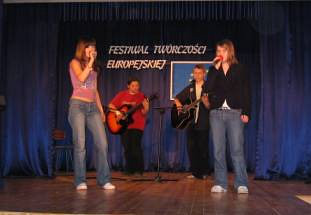 |
|
| Polacy | Hiszpanie |
|
|
|
| Włosi | Słowacy |
THE "POLAND" YOU HAVE NEVER SEEN: ...STROLLING PODKARPACKIE
The “Ignacy Lukasiewicz Petroleum Industry Museum” in Bobrka is unique in the world. In the second half of the 19th century, on this tiny piece of Polish soil, petroleum industry was born, giving great impetus to the development of the modern industrial era. It is unquestionable that the father of this industry was Ignacy Lukasiewicz. The idea originated at the end of the 19th century, but works started only in 1960, when the Museum Guardian Committee was set up, on the Millennium of the Polish Statehood. The 20-hectare park hosts exhibits representing the oil and gas production, as well as the refinery and distribution sectors. Among the historical objects illustrating the origins of the Polish petroleum industry, there is an Obelisk commemorating the Bobrka oil plant establishment, created by I. Lukasiewicz in 1854, two operative hand-sunk oil wells, called "Franek" and "Janina", as well as a number of remnants of similar facilities dating from 1854 –1880, eight 19th century wooden buildings. In the building erected by Ignacy Lukasiewicz, situated at the centre of the museum grounds, there are seven exhibition rooms displaying the largest kerosene lamps collection in the country.
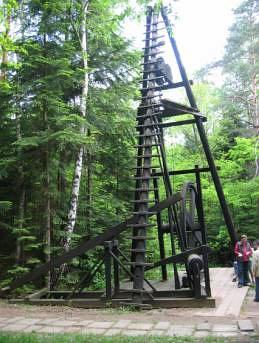 |
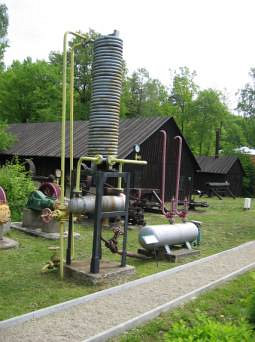 |
THE WATERFALL “BY THE MILL” IN IWLA
|
This waterfall is the biggest in the Low Beskid range. It has 2 rock steps: one is 4 meters high and the other one is 2 meters high. The waterfall formed on a set of faults and, as a result, a very interesting geological section can be seen now, both in the rock step and in the valley. The name ”By the Mill” makes reference to the mill which had been built there over 250 years before and which was destroyed during the war. In 2002 the waterfall was recognized as a geological monument. |
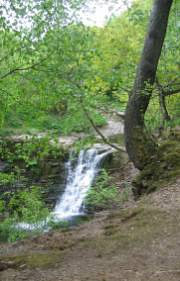 |
THE ORTHODOX CHURCH IN THE VILLAGE OF CHYROWA
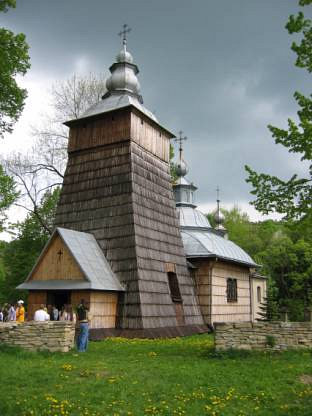 |
 |
|
This Orthodox Church is one of the most interesting churches in the area. Its oldest part – the brick chancel, which dates from the early 17th century, originally was probably a chapel . The wooden nave, the women’s section and the tower were added in 1780. The internal part contains a beautiful 17th century rococo iconostasis including an antique icon of Madonna with Child. An interesting fact connected with the place was the discovery of the bell which had been buried by the villagers in 1939, just before the German Invasion. |
THE ETHNOPARK IN SANOK

It is the biggest museum of this type in Poland and one of most beautiful in Europe. This 38-ha ethnographic park displays buildings of historical interest of the former inhabitants of the Podkarpacie Region (Bojko, Lemki, Pogorze and Dolina) in almost natural conditions. The ground for the building of the dwelling houses was chosen on the basis of the configuration of the primitive area.
In the upper parts of the museum, partly afforested, there are the mountaineers’ houses, while in the valley, near the River San, there are the dwelling houses of the other ethnic groups. There are also various buildings connected with folk industry, blacksmith's shops, sawmills, water-mills, windmills and sacral buildings. All the exhibits which are inside the buildings are authentic and they were used by particular ethnic groups.
All the structures in the park, starting with chimneyless cabins with a hole in the roof for the smoke, mills and ending with various ateliers of an oilman, a blacksmith, a cooper, a weaver, as well as abundantly furnished sacral buildings are wonderfully composed into the topography of the area.

Besides the permanent exhibition, visitors can see a display of "Karpacka Icons", which contains more than 200 of the most beautiful and precious iconographic paintings coming from different Orthodox Churches in Podkarpacie.
LANCUT PALACE
|
Lancut was built in 1349 by king Kazimierz Wielki (The Great). The first owner of the town was Otton from Pilcza, who was followed by the Stradnicki, Lubomirski and Potocki families. The town emblem represents St. Michael killing a dragon. Lancut castle is one of most beautiful aristocratic residences in Poland. It is famous for the interior and for an interesting collection of carriages. The palace is surrounded by a picturesque park and in the past the household buildings were closely connected with everyday life in the residence. There are extensions to the main buildings; the one on the right hosts a conservatory with a botanical garden which is open to visitors. |
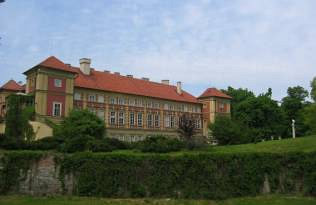 |
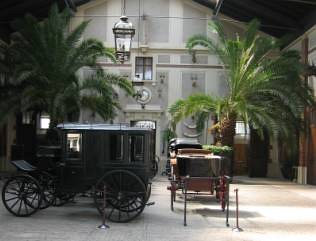 |
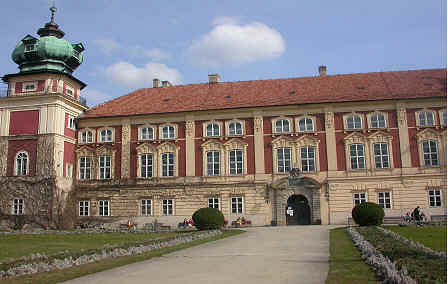
THE CASTLE IN KRASICZYN
Krasiczyn castle is one of the most beautiful monuments of Polish cultural heritage. It is a wonderful example of Renaissance – Mannerist architecture, not only in Poland, but also in Europe. It was built between the 16th and 17th centuries. In the corners of the castle there are 4 round towers – God’s tower, the Papal, the Royal and the Noble towers. In the castle courtyard, which is surrounded by an arcade, visitors can admire wonderful decorations representing biblical scenes, medallions of emperors’ busts, portraits of Polish kings and hunting scenes. The castle is surrounded by an amazing and unusual park, famous for a rich variety of plant species. In 1835 the castle was purchased by the Sapieha family, who introduced a new tradition. Since that time, the birth of a son was celebrated by planting an oak tree, while a lime tree was planted after a girl was born. At present these stately powerful trees are over 150 years old and besides making the place extremely attractive to visitors, they also remind people of the last castle owners. In the middle of the park there is an upper pond with a glade and a promenade. The large romantic park and the Renaissance castle are perfectly integrated in the landscape of the Przemyskie Foothills.
 |
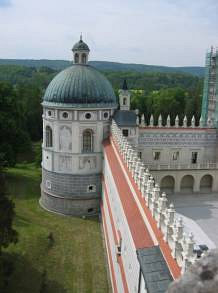 |
BIECZ
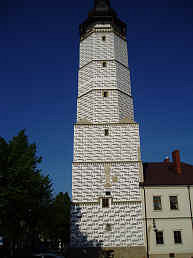 When
travelling across the Low Beskid range, one cannot miss the charming
town of Biecz, called the ”Small Cracow”. Due to its unique
architectonic jewels, Biecz is regarded as the ”pearl” among the towns
in southern Poland. The town looks charming thanks to numerous historic
sites, including the defensive walls. One of the oldest buildings hosts
a very interesting Museum of Pharmacy, with an amazing exhibition of
pharmaceutical items.
When
travelling across the Low Beskid range, one cannot miss the charming
town of Biecz, called the ”Small Cracow”. Due to its unique
architectonic jewels, Biecz is regarded as the ”pearl” among the towns
in southern Poland. The town looks charming thanks to numerous historic
sites, including the defensive walls. One of the oldest buildings hosts
a very interesting Museum of Pharmacy, with an amazing exhibition of
pharmaceutical items.
The rectangular town square was the main market area. In the middle there is the town hall with an impressive Renaissance tower, dating back to 1569. In fact, it is the highest building in town, 56 meters high. On top of the tower, under the baroque dome, there is a viewing arcade, while the vaults house the medieval prison.
GLASS-WORK FACTORIES
During the meeting in Italy, we had visited the world-famous artistic Venetian glass-work workshops, but also south-eastern Poland can boast interesting examples of glass-work production. During our visit, besides the factory in Tarnowiec, we could admire a great variety of Christmas decorations, manufactured in Jaslo by “Dagmara”.
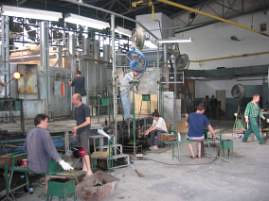
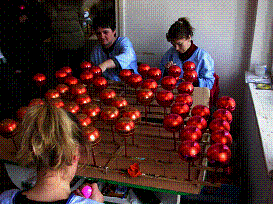
CRACOW
For over five centuries and a half, from 1040 to 1596, Cracow was both the royal seat and the capital city of Poland; later on, it remained a significant scientific and cultural centre. Fortunately, the war left the city’s monuments untouched. Registered by UNESCO into the list of the World Heritage, Cracow’s historical centre – the Old City with Wawel, Kazimierz and Stradom – hosts the most significant monuments of Polish history: approximately 3.000 buildings and museums, without which it is not possible to touch upon art history in Poland.
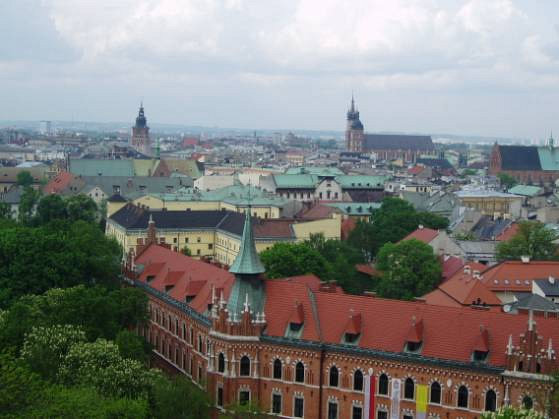
The Old City has preserved its medieval layout, but for the fact that the former battlements were transformed into a green strand of plants, testified to by the impressive Barbican, St. Florian’s Gate and three towers. The centre develops from the Main Marketplace, laid out in 1257; in fact, there are three streets, starting from its corners, which subsequently intersect like on a chessboard. It is one of the biggest marketplaces in medieval Europe, surrounded by old tenement-houses and palaces, the city-hall tower dating back to the 14th century in the middle and two lines of 13th century stalls, included in the Renaissance structure of the Sukiennice (Cloth Hall). A trumpet signal given out from a tower of St. Mary’s Church, behind which there is the Small Marketplace, announces midday every day, as it did a number of centuries ago, not only to Cracow, but also, through the radio – to the whole country. The Old City monuments include, among other things, Collegium Maius, presently housing the Jagiellonian University museum, whose tradition dates back to 1364. On Wawel Hill there is a Renaissance castle with an arcaded courtyard; it hosts National Art Collections and towers over the Old City. The interiors display collections of old weaponry, paintings, and the famous Arras tapestries, manufactured in Dutch workshops in the late 16th century.
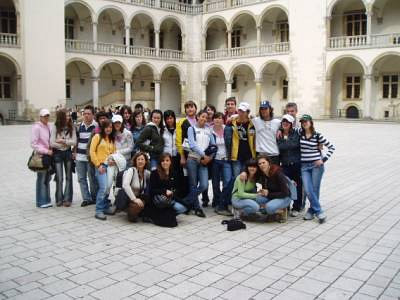
Stradom, which can be reached descending from the Wawel Hill, had been an ancillary handicraft settlement since the 14th century, while Kazimierz was a district of Cracow Jews, a centre of Jewish religion, science and culture, famous both in Poland and in Europe. Destroyed during the Second World War and depopulated by the Holocaust, the district is currently subject to accurate restoration works.
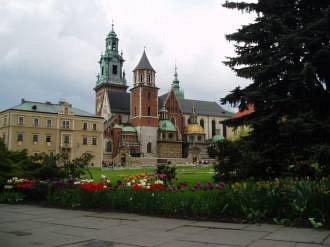
The historic Salt Mine in Wieliczka is the only site in the world where mining has continued since the Middle Ages. Lying on nine levels, its original excavations (longitudinals, traverses, chambers, lakes, as well as lesser and major shafts) stretch for 300 kilometres and reaching the depth of 327 metres, they illustrate all the stages of the development of mining technology over time.
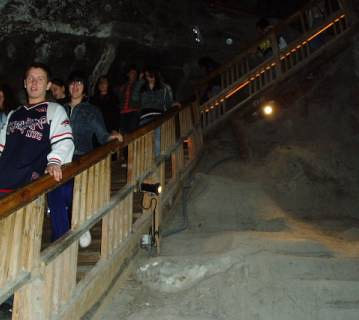
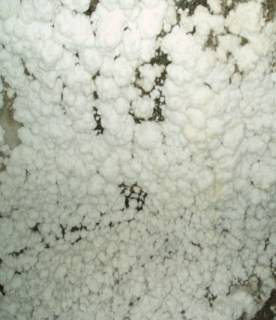
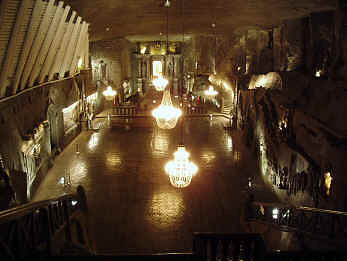
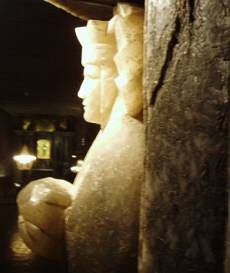
The Wieliczka Salt Mine entered UNESCO's 1st World List of Cultural and Natural Heritage on 8th September. The Salt Mine in Wieliczka has always generated considerable interest. In the 14th century it used to be shown to the privileged visitors of the royal court as the site of salt production; later on, as a vast underground labyrinth of chambers and passages, it was admired for its specific charm and mystery. Towards the end of the 15th century, as the historical documents claim, tourist activity began in the Mine. Early in the 20th century, another tourist attraction was added, namely, the Chapel of the Blessed Kinga, with its walls decorated with scenes from the Bible, shown in magnificent relief, and carved by miners-sculptors.
The chamber is lit by chandeliers made of crystalline salt. The dimensions of the chapel are as imposing as the beauty of the interior decoration. The chapel is 10 metres high, 54 m. long and 15 m. wide. On the fifth level of the mine, 211 m underground, a sanatorium has been working for forty years, where mainly respiratory system illnesses and allergies are treated.
AUSCHWITZ - OŚWIĘCIM
“People prepared this lot for people” – a Polish writer wrote. In order to commemorate it as an eternal warning, the National Museum in Oświęcim-Brzezinka was established within the area of the former hitlerite extermination camp. Auschwitz Konzentrationslager was founded by the Nazis in April, 1940.

At the end of the Second World War its area totalled 40 square km and it was the biggest German concentration camp. Apart from Polish prisoners, people of 28 nationalities were brought there.


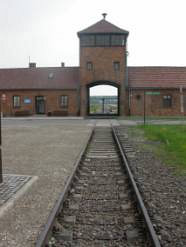 The
Supreme Tribunal of Nations assumed that 2.8 million people were
murdered in Auschwitz. In the Museum, located within the area of
Oświęcim, documentary exhibitions are arranged in 10 out of 28 blocks
for prisoners (among other things, a heap of shoes, piles of artificial
limbs, glasses, etc.).
The
Supreme Tribunal of Nations assumed that 2.8 million people were
murdered in Auschwitz. In the Museum, located within the area of
Oświęcim, documentary exhibitions are arranged in 10 out of 28 blocks
for prisoners (among other things, a heap of shoes, piles of artificial
limbs, glasses, etc.).
In the courtyard, between the 10th block and the 11th (the famous “death block”) there is the “doom wall”, where prisoners were murdered by being shot in the back of their heads. In Brzezinka, a railway side-track with an unloading ramp runs beyond the main guard gate, where the so-called “transport selections” used to be performed. Erected owing to the International Oświęcim Committee efforts, the immense Monument of Hitlerism Victims is right at the end of the track. Neither Oświęcim nor Brzezinka can be visited by children under14.
